Burns are a very easy accident with only one small mistake. There are many causes of burns such as burns by fire, heat, chemicals … Depending on the causes of burns, we have a mode of first aid and treatment of burns differently to avoid complications dangerous for the patient’s health.
Instructions for handling burns
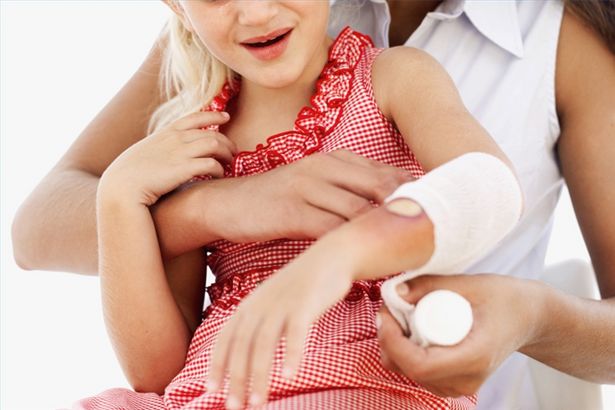 Depending on the officer causing the burn, there will be a reasonable first aid approach.
Depending on the officer causing the burn, there will be a reasonable first aid approach.
The condition of the burnt body depends on 3 factors:
Depth of burns.
The area of the burn.
The location of the burn on the body.
1. Depth of burn
Burns are classified by depth in 3 degrees:
1.1 Degree I: surface burns
In this case, only the outermost layer of the skin is damaged, causing redness and pain in the skin due to nerve stimulation of the tip. This type of burn heals completely after 3 days.
1.2. Grade II: partial skin burns
In this case, the epidermis and part of the dermis are damaged, blister pockets are formed, if the blisters form, if the blisters burst, expose a pink surface, and also very painful. If kept clean, the burn will heal on its own after about 1 to 4 weeks without treatment and without leaving a scar or scar, but not significant. But the texture of the skin after the burn heals may be red for longer. If a II degree burn becomes infected, the lower layer of the skin will be destroyed and a II degree burn turns into a III degree burn.
 For partial skin burns, if kept clean, the burn will heal after about 1 to 4 weeks without any treatment and without leaving a scar.
For partial skin burns, if kept clean, the burn will heal after about 1 to 4 weeks without any treatment and without leaving a scar.
1.3. Grade III
Burns of all layers of the skin: All layers of the skin are damaged, including the pores and sweat glands. The burn is pale white or gray, hard and shedding (painless), and the nodules are destroyed.
In very severe burns of the entire skin layer, the subcutaneous fat layer can also be destroyed and expose the muscle.
When all the layers of the skin are burned, the burn is only gradually healed from the edge of the burns, and the burns are very susceptible to infection, so the healing time usually lasts a long time.
The depth of a burn is sometimes not equal because the depth of the burn depends on the temperature, the chemical concentration … and the time during which the temperature or the chemical affects the skin. The skin tends to retain heat and the clothes are burnt which makes the wound worse, so using too much water to wash off the burn when the burn has just occurred (within 30 minutes this will reduce the depth of the burn.
2. Burn area
There are many ways to estimate the burnt area, but generally the burnt area is calculated using rule number 9.
The larger the burn, the more dangerous it is because the larger the burn, the greater the loss of body fluids, causing more pain, shock and infection. For adults, a burn of 15% or more and a child of 10% or more should be considered severe burns and should be referred to the hospital.
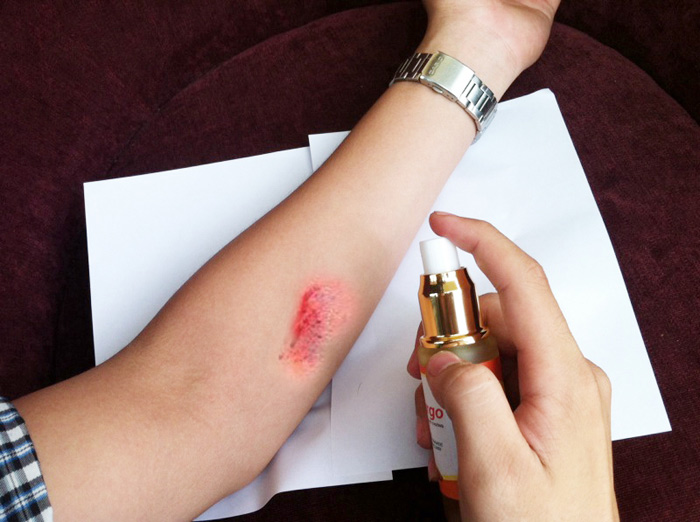
The larger the burn, the more dangerous it is.
3. Location of the burn on the body
Burns in different areas also mean a lot to life and recovery.
For example:
Burns to the face and neck can cause compressive edema of the airways, prone to bad scarring and deformity.
Burns to the eyes can lead to blindness.
Burns to the hands or joints can cause spasticity, loss or loss of function.
Burns in the back, anal genital area, and areas near the anus often present a high risk of infection, prolonging the healing time of the burn.
If the victim breathes in smoke or heat, it can cause respiratory tract burns, causing airway swelling, causing obstruction, leading to respiratory failure and easily leading to pneumonia.
4. General emergency care for burns
4.1. Put out hot flames on clothes and cool the burn
This is the first and most important action to prevent the victim from being further and deeply burned.
Use water or sand to put out the fire, or you can use a jacket, mug, or rag to cover the burning area (do not use plastic or plastic cloth to put out the fire).
Detach any part of clothing that smolders or is soaked in hot water, oil or chemical solutions if there is no cold water immediately to rinse the burned area.
Firmly cover the burnt area and pour cold water over it. For hand burns, it is possible to let tap water run directly over the burned area or soak the burned limb in cold water on the burned area, but should be changed regularly every 3-4 minutes until the victim feels less painful.
Remove hard objects on the burned area such as shoes, boots or rings before the burn swells.
Cover the burned area with a sterile gauze cloth, if available, or with a clean gauze or cloth.
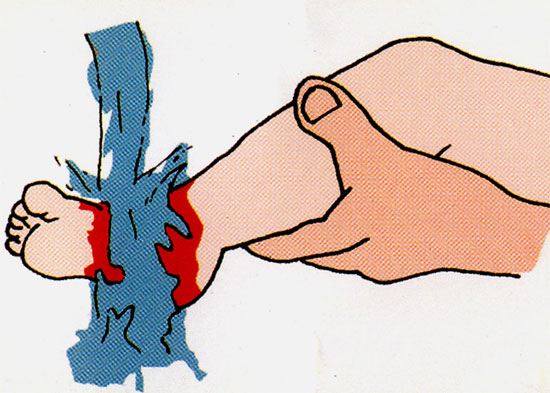 How to treat burns caused by fire.
How to treat burns caused by fire.
4.2. Shock prevention
Place the victim in a supine position.
Encourage the victim to take comfort.
Give the victim water to drink as they are very thirsty, especially when moving away.
Warning:
- Allow the victim to drink water only when conscious, without vomiting, and without further injury.
Solution for oral administration: If possible, the following solution should be mixed for the victim to drink.Mix 1 liter of water:
+ 1/2 teaspoon of salt ǎn.
1/2 teaspoon of sodium bicarbonate salt.
2-3 teaspoons of sugar or honey, orange juice, lime juice.
If it is not possible to prepare the above solution, the victim can drink sugar or mineral tea.
– Use pain relievers for the victim, use aspirin.
When using pain relievers, if you suspect that the victim has an internal injury, you should not use strong sedatives or pain relievers.
– Quickly transfer the victim to the treatment center as soon as possible.
4.3. Airway maintenance
The victim who burns the face and neck area, especially when trapped in a burnt down house where the oil, furniture, furniture, are on fire … will quickly develop swelling of the face and neck and complications of the respiratory route due to inhalation of vapors. These cases should be given priority number 1 and should be referred immediately. But in the meantime, the victim must be closely monitored and must ensure ventilation of the respiratory tract (maintain a correct posture or can put a cannula in the nose or mouth of the victim, in some cases he must open the trachea …) .
4.4. Prevent infection
The burn itself is sterile. Therefore, when giving emergency burn care, be very careful to avoid contamination of the burn: do not use dirty water to rinse or apply it to the burn, and make sure that emergency responders must wash your hands and avoid touching the burn.
4.5. By the burn
Do not apply grease, alcohol solution, or antibiotic cream to the burn.
Do not touch the water burners
Do not remove the skin or clothing from the burn
If possible, cover the burn with sterile gauze or use a clean cloth if possible.
The burn will drain a lot of fluid, so before using an elastic pad to re-burn the burn, you should dampen a layer of absorbent cotton on the gauze or rag to cover the burn.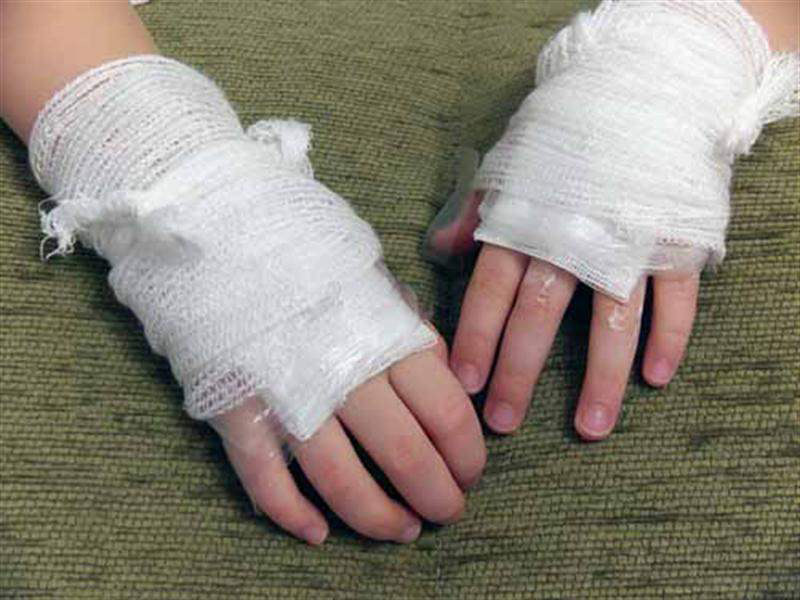
When dressing the burn, it is necessary to apply an elastic bandage.
Note: If a rubber band is not available, loosen only the burn area to prevent the swelling from causing pressure.
If the hand burns, it is possible to place the hand in a plastic bag and then loosen the wrist, which will allow the fingers to be easily moved while avoiding the burn.
If the burn is on a wrist or leg, first cover the burn with a sterile gauze pad or clean cloth, then place it in a plastic bag. The burnt limb immobilizer can be placed, but in all cases it is necessary to lift the burnt limb to avoid swelling of the toes and fingers and advise the victim to move the toes and fingers early if necessary. .
5. First aid for certain special burns
5.1. Electrical burns
Electric shocks or lightning can cause very deep burns. In some patients with electrical burns, the body will also experience cardiac arrest due to the current hitting the heart. First aid for the next burn. But before proceeding, the burn should:
Power outage.
If the power cannot be turned off, the victim should be removed from the electrical contact (insulators should be used: rubber, dry wooden sticks to remove or pull the victim).
During the first aid for the burn, it is necessary to quickly transfer the victim to the hospital, since patients with electrocution are very likely to have cardiovascular problems.
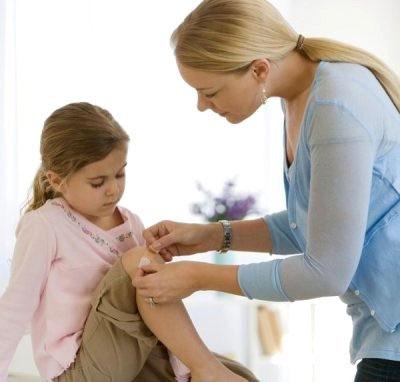 When giving first aid to the burn, the victim should be rushed to hospital.
When giving first aid to the burn, the victim should be rushed to hospital.
5.2. Chemical burns
Certain chemicals such as acids, strong alkalis or iodine, industrial phosphorus or lime can cause severe burns and extreme pain; For severe burns that make victims very painful, these types of chemical burns should:
Wash immediately, wash continuously with water as much as possible, otherwise the organs in the burned area will be completely necrotic.
If the cause of the burn is determined to be acidic, rinse the burn with water mixed with baking soda. If the burn is due to alkali, wash with water mixed with vinegar and lemon juice. But if the eyes burn from chemicals, then they are washed only with normal water. If there are still small particles of lime in the eye, it should be rinsed vigorously to dislodge these particles of lime.
Clothing contaminated with chemicals should be removed immediately. When removing, be sure to protect the hands of the person performing this action (do not use bare hands to remove).
If the burn is bleeding a lot, it should be treated as a hemorrhagic wound.
Immediately transfer the victim to the treatment facility.
First aid for a burn is simple, hassle-free, but requires urgent and flexible emergencies. Competent ambulances can avoid many serious complications for the victim. 70% of burns kept clean heal naturally. Many severe burns, extensive burns, but have saved lives and left negligible damage due to first aid and the right first aid.
Errors in handling burns
“Usually people apply toothpaste to cool the burns. However, in a slightly alkaline toothpaste, this alkaline substance will make the burn worse. And a fish sauce that is high in protein is a favorable environment for bacteria. To flourish and proliferate,” he said. analyzed Dr Le Vi Anh, Department of Dermatology – Aesthetic Skin, University Hospital of Medicine and Pharmacy of Ho Chi Minh City.
“Absolutely not pouring ice water on the damaged skin will increase the level of damage and the depth of the burn,” said Dr Phan Thai Son – Deputy Head of the Department of Positive Resuscitation, University Hospital of Medicine and Pharmacy, HCMC .
According to Dr. Son, pouring cold ice on the burn is very dangerous. The temperature of the ice is much lower than the body temperature. If you put a lot of ice, the water temperature may drop to almost 0 degrees Celsius, meanwhile, the area may be burnt to 45-50 degrees C. Therefore, if you use ice to lower the temperature quickly, you will get the burns worse.


